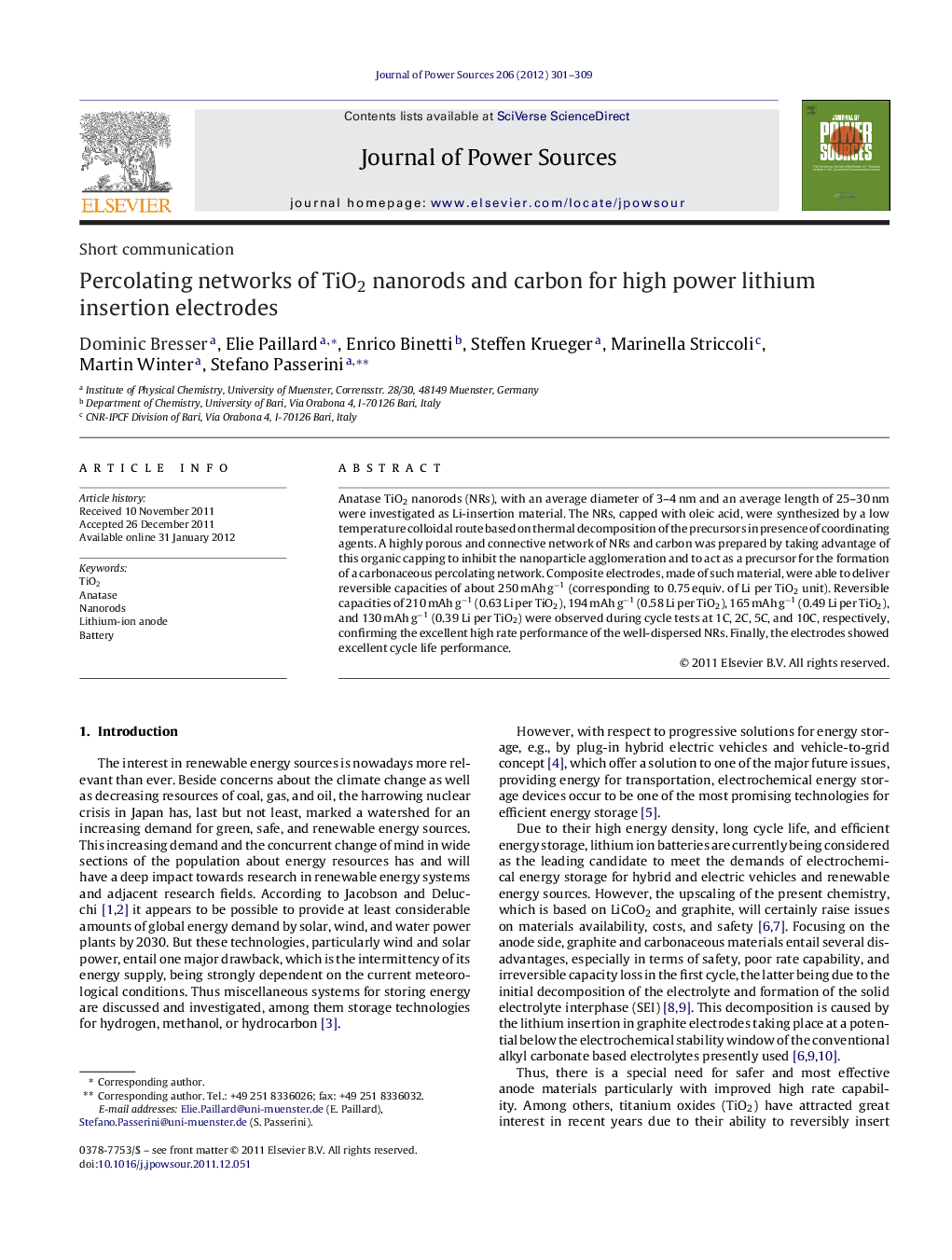| Article ID | Journal | Published Year | Pages | File Type |
|---|---|---|---|---|
| 1293090 | Journal of Power Sources | 2012 | 9 Pages |
Anatase TiO2 nanorods (NRs), with an average diameter of 3–4 nm and an average length of 25–30 nm were investigated as Li-insertion material. The NRs, capped with oleic acid, were synthesized by a low temperature colloidal route based on thermal decomposition of the precursors in presence of coordinating agents. A highly porous and connective network of NRs and carbon was prepared by taking advantage of this organic capping to inhibit the nanoparticle agglomeration and to act as a precursor for the formation of a carbonaceous percolating network. Composite electrodes, made of such material, were able to deliver reversible capacities of about 250 mAh g−1 (corresponding to 0.75 equiv. of Li per TiO2 unit). Reversible capacities of 210 mAh g−1 (0.63 Li per TiO2), 194 mAh g−1 (0.58 Li per TiO2), 165 mAh g−1 (0.49 Li per TiO2), and 130 mAh g−1 (0.39 Li per TiO2) were observed during cycle tests at 1C, 2C, 5C, and 10C, respectively, confirming the excellent high rate performance of the well-dispersed NRs. Finally, the electrodes showed excellent cycle life performance.
► Congruent TiO2 nanorods are made using an organic capping agent. ► Carbonization of the capping agent leads to the formation of electronically conductive carbon percolating network embedding TiO2 nanorods. ► Electrodes composed of such material show an exceptional combination of high capacity, rate capability and cycle lifetime.
